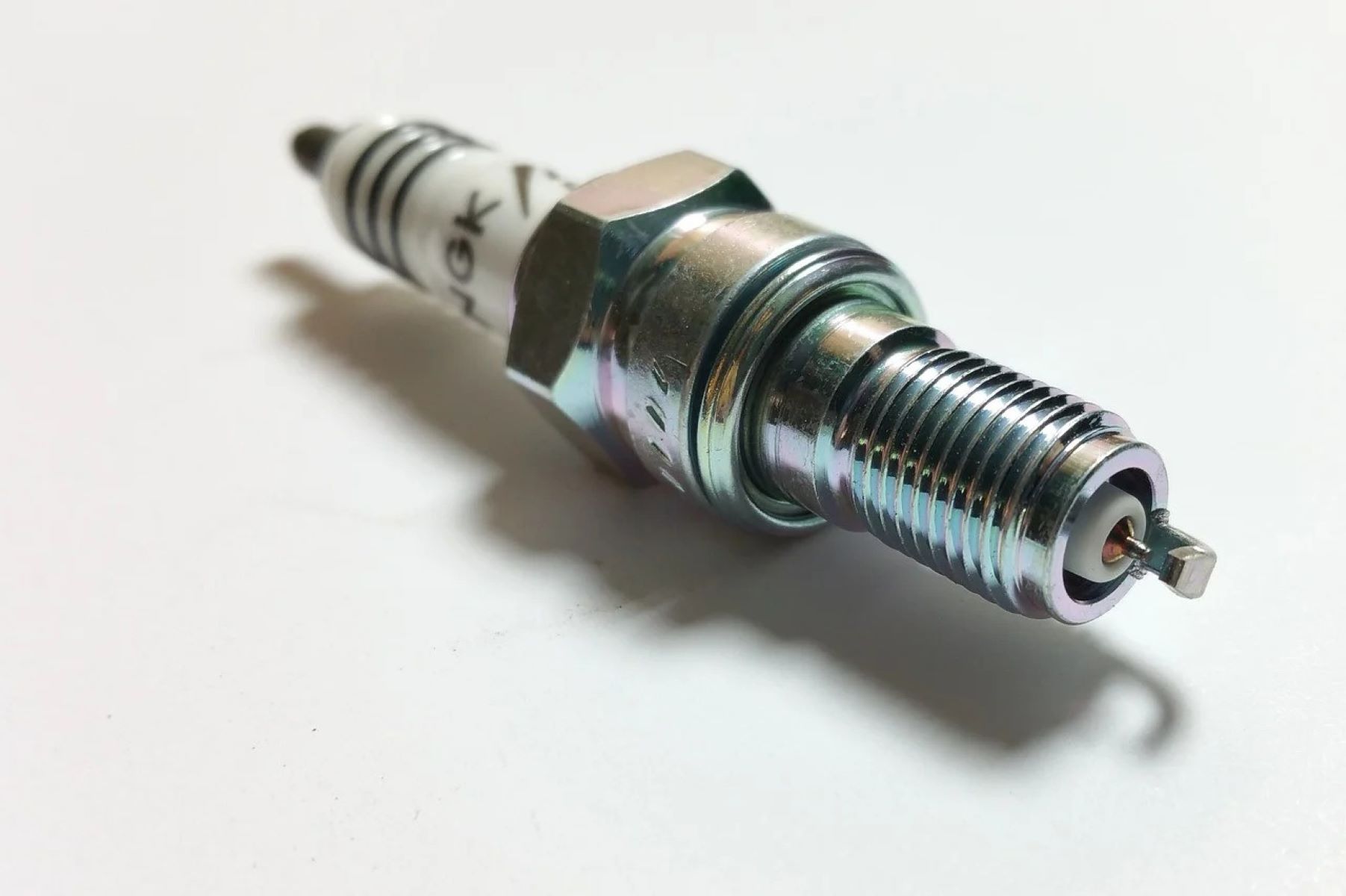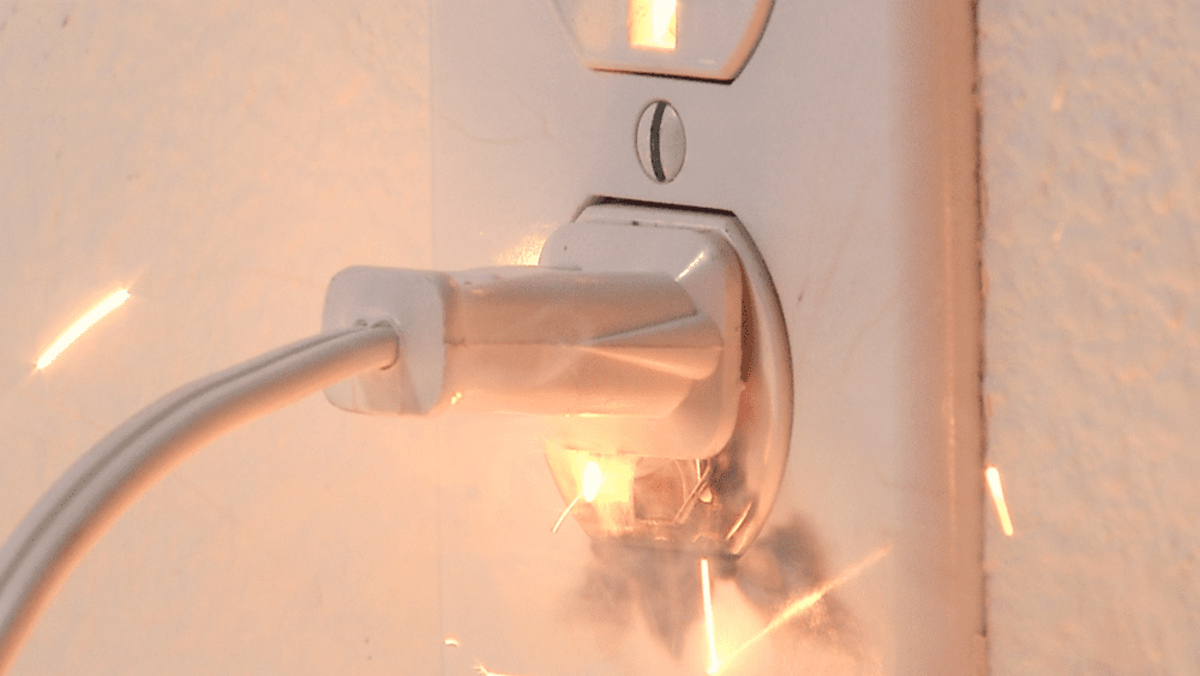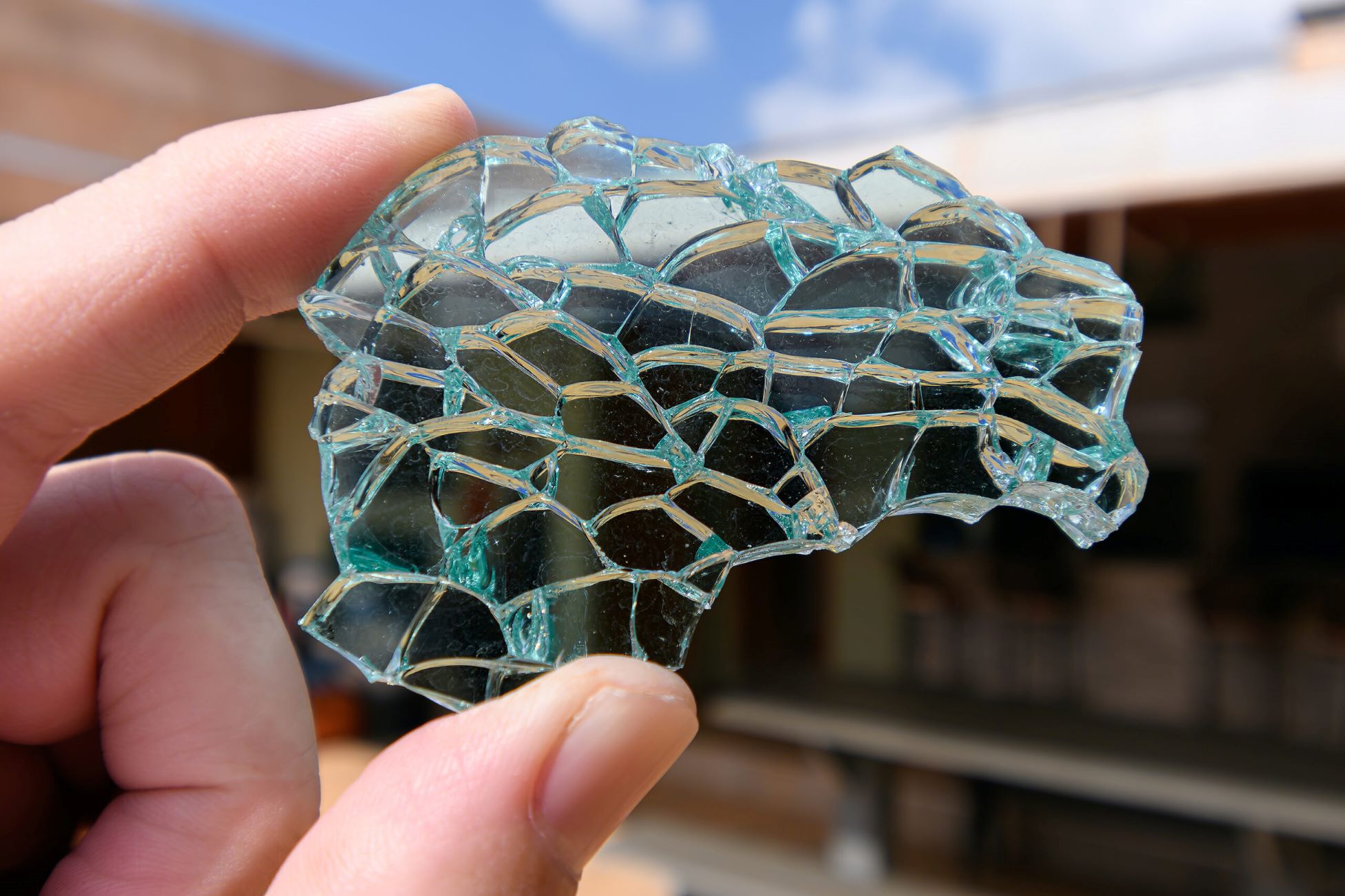Home>Furniture & Design>Interior Design Trends>Why Does A Spark Plug Break Glass


Interior Design Trends
Why Does A Spark Plug Break Glass
Published: February 4, 2024
Discover the latest interior design trends and learn why a spark plug can break glass. Explore innovative ideas for your home decor.
(Many of the links in this article redirect to a specific reviewed product. Your purchase of these products through affiliate links helps to generate commission for Storables.com, at no extra cost. Learn more)
Introduction
The enigmatic allure of spark plugs has captivated the curiosity of many, leading to a common question: can a spark plug break glass? This query often arises from a combination of fascination with the power of spark plugs and a desire to understand their capabilities beyond their intended function. In this article, we will delve into the intricacies of spark plugs, exploring their fundamental workings and addressing the intriguing possibility of their ability to break glass.
The world of automotive engineering and mechanics is a realm of innovation and precision, where components such as spark plugs play a pivotal role in igniting the internal combustion engines that power our vehicles. However, the mystique surrounding spark plugs extends beyond their mechanical significance, sparking discussions about their potential to exhibit unexpected and astonishing feats.
As we embark on this exploration, we will unravel the inner workings of spark plugs, shedding light on their mechanisms and the conditions under which they operate. By gaining a deeper understanding of the science behind spark plugs, we can discern whether the notion of a spark plug breaking glass is rooted in reality or simply a product of speculation.
Join us on this journey as we unravel the mysteries of spark plugs and uncover the truth behind the captivating question: can a spark plug break glass?
Key Takeaways:
- Spark plugs can potentially break glass under specific conditions, such as malfunctioning ignition systems or high voltage surges, but this occurrence is rare in real-world scenarios.
- The captivating question of whether a spark plug can break glass showcases the multifaceted nature of its capabilities, sparking curiosity and contemplation within the realm of automotive engineering.
Read more: How Does A Spark Plug Break Glass
What is a spark plug?
A spark plug is a small yet indispensable component nestled within the intricate machinery of internal combustion engines. It serves as the catalyst for igniting the air-fuel mixture within the combustion chamber, propelling the engine into motion. Comprising a robust metal shell housing a central electrode, a spark plug embodies the fusion of engineering precision and scientific principles.
The fundamental design of a spark plug encompasses a threaded metal shell that is meticulously crafted to withstand the extreme conditions prevalent within the combustion chamber. This shell encases a porcelain insulator, which acts as a barrier to contain the high voltage generated during the ignition process. At the core of the spark plug lies the central electrode, a crucial element that plays a pivotal role in initiating the combustion sequence.
The intricate orchestration of the spark plug's components is orchestrated by the ignition system of the engine. As the piston reaches the top of its compression stroke, the ignition system delivers a high-voltage electrical pulse to the spark plug. This surge of electricity surges through the central electrode, creating a potent electric field that ionizes the air-fuel mixture. The resulting spark ignites the mixture, setting off a controlled explosion that drives the piston downward and sets the engine in motion.
In essence, a spark plug serves as the linchpin of the combustion process, harnessing electrical energy to trigger the controlled detonation of the air-fuel mixture. Its seamless integration into the engine's operation underscores its significance, as it embodies the synergy between mechanical precision and scientific innovation.
The evolution of spark plug technology has seen advancements in materials, design, and performance, leading to enhanced efficiency and durability. This continual refinement underscores the pivotal role of spark plugs in the realm of automotive engineering, where their reliability and efficacy are paramount to the smooth operation of internal combustion engines.
In the intricate tapestry of automotive engineering, the spark plug stands as a testament to the fusion of scientific ingenuity and mechanical precision, embodying the essence of innovation that propels the automotive industry forward. Its unassuming stature belies its profound impact, as it ignites the spark that fuels the engines powering our vehicles, symbolizing the convergence of technology and progress.
How does a spark plug work?
A spark plug operates as a crucial catalyst in the intricate sequence of events that drive the internal combustion engine. Its functionality hinges on the precise orchestration of electrical energy and chemical reactions, culminating in the controlled ignition of the air-fuel mixture within the combustion chamber.
The ignition process commences as the piston ascends to the apex of its compression stroke, heralding the pivotal moment for the spark plug to spring into action. At this juncture, the ignition system delivers a surge of high-voltage electricity to the spark plug, propelling it into a state of electrified readiness. This electrical pulse surges through the central electrode, generating an intense electric field that ionizes the air-fuel mixture enveloping the spark plug.
The ionization of the air-fuel mixture precipitates the formation of a conductive path, paving the way for the discharge of a potent spark. This spark, emanating from the tip of the central electrode, serves as the ignition source that ignites the pressurized air-fuel mixture. The ensuing combustion event triggers a controlled explosion, propelling the piston downward with formidable force and setting the engine in motion.
The seamless synchronization of electrical energy and chemical reactivity within the spark plug epitomizes the harmonious convergence of scientific principles and mechanical precision. Its ability to harness electrical energy and channel it into a catalytic spark underscores its pivotal role in the combustion process, where it serves as the linchpin that propels the engine into action.
The intricate dance of electrical surges and chemical reactions encapsulates the essence of the spark plug's functionality, embodying the seamless fusion of scientific innovation and mechanical prowess. Its unwavering reliability and precision underscore its significance as a cornerstone of internal combustion engines, where it stands as a testament to the symbiotic relationship between technology and progress.
In essence, the spark plug's operation epitomizes the intricate interplay of electrical energy and chemical kinetics, culminating in the controlled ignition of the air-fuel mixture. Its seamless integration into the combustion process underscores its pivotal role in propelling the engine forward, symbolizing the fusion of scientific ingenuity and mechanical precision.
A spark plug can break glass because it produces a high voltage electrical spark, which can create a sudden increase in pressure and temperature, causing the glass to shatter.
Can a spark plug break glass?
The notion of a spark plug breaking glass has sparked intrigue and speculation, prompting inquiries into the veracity of this captivating possibility. While the primary function of a spark plug revolves around igniting the air-fuel mixture within the combustion chamber of an internal combustion engine, the question of its capacity to break glass transcends its conventional role.
In essence, a spark plug possesses the inherent capability to generate a potent electrical spark, a fundamental aspect of its operation. This spark, harnessed within the controlled environment of the combustion chamber, serves as the ignition source that propels the engine into motion. However, when extrapolating this capability beyond its intended application, the prospect of a spark plug breaking glass emerges as a subject of contemplation.
The potential of a spark plug to break glass hinges on the intensity and energy of the electrical spark it generates. Under specific conditions, such as when a spark plug is subjected to external factors that augment its electrical output, the resulting spark may possess sufficient energy to fracture glass. This scenario, while conceivable, is contingent upon a confluence of factors that amplify the spark plug's electrical discharge to a level capable of affecting glass.
Factors such as a malfunctioning ignition system, an unusually high voltage surge, or an atypical configuration of the spark plug could contribute to an escalation in the intensity of the electrical spark it produces. In such instances, the spark plug may yield a spark with augmented energy, potentially culminating in the fracturing of glass within its proximity.
Moreover, the composition and structural integrity of the glass in question play a pivotal role in determining its susceptibility to being affected by the electrical discharge from a spark plug. Brittle or flawed glass, when subjected to the force of a high-energy spark, may succumb to the resulting stress and exhibit signs of fracture or breakage.
While the prospect of a spark plug breaking glass embodies a captivating and theoretically plausible premise, its occurrence within real-world scenarios remains an infrequent and anomalous phenomenon. The conventional operation of spark plugs within internal combustion engines seldom intersects with the realm of glass breakage, underscoring the rarity of such occurrences.
In essence, while the potential of a spark plug to break glass exists within the realm of theoretical plausibility, its practical manifestation remains an uncommon and exceptional occurrence. The captivating prospect of a spark plug breaking glass serves as a testament to the multifaceted nature of its capabilities, transcending its conventional role and evoking contemplation on the boundaries of its influence.
Factors that can cause a spark plug to break glass
The potential of a spark plug to break glass hinges on a confluence of factors that can amplify its electrical output to a level capable of affecting glass. While the conventional operation of a spark plug within an internal combustion engine rarely intersects with the realm of glass breakage, certain circumstances and conditions can contribute to the manifestation of this captivating phenomenon.
-
Malfunctioning Ignition System: A malfunctioning ignition system can lead to an abnormal surge in voltage delivered to the spark plug. This surge, exceeding the standard operating parameters, can result in the generation of an exceptionally high-energy spark. Under such conditions, the intensified electrical discharge from the spark plug may possess the potential to affect the structural integrity of glass within its vicinity.
-
High Voltage Surge: An unusually high voltage surge within the ignition system can augment the energy of the electrical spark produced by the spark plug. This surge, stemming from irregularities or malfunctions within the electrical circuitry, can lead to the generation of a spark with heightened potency. In the presence of glass, this intensified spark may exert sufficient force to induce stress and potential fracture within the glass structure.
-
Atypical Spark Plug Configuration: Deviations from the standard configuration of a spark plug, whether stemming from manufacturing irregularities or alterations, can impact its electrical output. An atypical spark plug configuration may result in the generation of a spark with unconventional characteristics, including heightened energy levels. When juxtaposed with glass, such a spark may engender stress concentrations, potentially leading to glass breakage under specific conditions.
-
Glass Composition and Integrity: The composition and structural integrity of the glass in question play a pivotal role in its susceptibility to being affected by the electrical discharge from a spark plug. Brittle or flawed glass, when subjected to the force of a high-energy spark, may succumb to the resulting stress and exhibit signs of fracture or breakage. Conversely, resilient and robust glass compositions may demonstrate greater resistance to the influence of the electrical discharge.
In essence, the potential of a spark plug to break glass is contingent upon a combination of factors that augment its electrical output and the susceptibility of the glass to external stress. While the occurrence of a spark plug breaking glass remains an infrequent and exceptional phenomenon, the interplay of these factors underscores the multifaceted nature of the spark plug's capabilities, transcending its conventional role and evoking contemplation on the boundaries of its influence.
Read more: Why Does Glass Break With Sound
Conclusion
In the realm of automotive engineering and mechanics, the enigmatic allure of spark plugs has sparked contemplation on their capabilities beyond their conventional function. The captivating question of whether a spark plug can break glass has elicited intrigue and speculation, prompting a deeper exploration of the factors that underpin this captivating possibility.
While the primary role of a spark plug revolves around igniting the air-fuel mixture within the combustion chamber of an internal combustion engine, the prospect of its capacity to break glass transcends its traditional application. The inherent capability of a spark plug to generate a potent electrical spark forms the foundation of this intriguing premise. Under specific conditions, such as when subjected to external factors that augment its electrical output, the resulting spark may possess sufficient energy to fracture glass.
The potential of a spark plug to break glass is contingent upon a confluence of factors, including a malfunctioning ignition system, an unusually high voltage surge, atypical spark plug configuration, and the composition and structural integrity of the glass in question. These elements, when aligned under specific circumstances, can contribute to the manifestation of this captivating phenomenon.
However, the occurrence of a spark plug breaking glass remains an infrequent and exceptional phenomenon within real-world scenarios. The conventional operation of spark plugs within internal combustion engines seldom intersects with the realm of glass breakage, underscoring the rarity of such occurrences. While the potential of a spark plug to break glass exists within the realm of theoretical plausibility, its practical manifestation remains an uncommon and exceptional occurrence.
In essence, the captivating question of whether a spark plug can break glass serves as a testament to the multifaceted nature of its capabilities, transcending its conventional role and evoking contemplation on the boundaries of its influence. The interplay of scientific principles, mechanical precision, and external factors underscores the complexity of this phenomenon, encapsulating the essence of innovation and curiosity within the realm of automotive engineering.
As we conclude this exploration, the enigmatic allure of spark plugs persists, weaving a tapestry of fascination and contemplation. The captivating question of whether a spark plug can break glass embodies the convergence of scientific ingenuity and mechanical precision, evoking a sense of wonder and curiosity that transcends the confines of conventional functionality. In the intricate dance of electrical surges and mechanical prowess, the spark plug stands as a testament to the symbiotic relationship between technology and progress, perpetuating the allure of its capabilities within the realm of automotive engineering.
Frequently Asked Questions about Why Does A Spark Plug Break Glass
Was this page helpful?
At Storables.com, we guarantee accurate and reliable information. Our content, validated by Expert Board Contributors, is crafted following stringent Editorial Policies. We're committed to providing you with well-researched, expert-backed insights for all your informational needs.















0 thoughts on “Why Does A Spark Plug Break Glass”